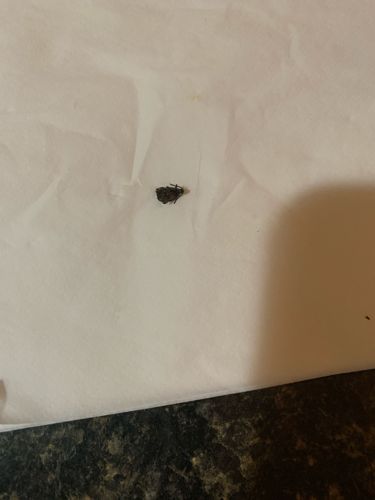Beetle (General Identification)
Scientific Name: Coleoptera (general order description, specific species cannot be determined from image)
Order & Family: Order: Coleoptera. Family: Unidentifiable from the provided image, but common families include Carabidae (ground beetles), Scarabaeidae (scarab beetles), Curculionidae (weevils), Tenebrionidae (darkling beetles), etc.
Size: Highly variable, ranging from less than 1 mm to over 15 cm. The specimen in the image appears to be relatively small, likely in the few millimeter range.

Natural Habitat
Extremely diverse, found in almost all terrestrial and freshwater environments, including forests, grasslands, deserts, mountains, aquatic systems, and human dwellings. Some species are considered household pests.
Diet & Feeding
Highly varied depending on the species. Beetles can be herbivorous (feeding on plants, wood, fungi), carnivorous (predators of other insects), omnivorous, or detritivores (scavenging on dead organic matter). Given the image, it's difficult to pinpoint a specific diet without further identification.
Behavior Patterns
Beetles undergo complete metamorphosis (egg, larva, pupa, adult). Many species are nocturnal. Some beetles, like dermestid beetles, are known for their scavenging behavior and can infest stored products or natural fibers.
Risks & Benefits
Risks: Many species are agricultural pests, damaging crops or stored food products. Some can infest homes (e.g., carpet beetles, pantry beetles). Benefits: Many are beneficial, acting as pollinators, natural pest control agents (predators), or decomposers, contributing to nutrient cycling.
Identified on: 8/17/2025